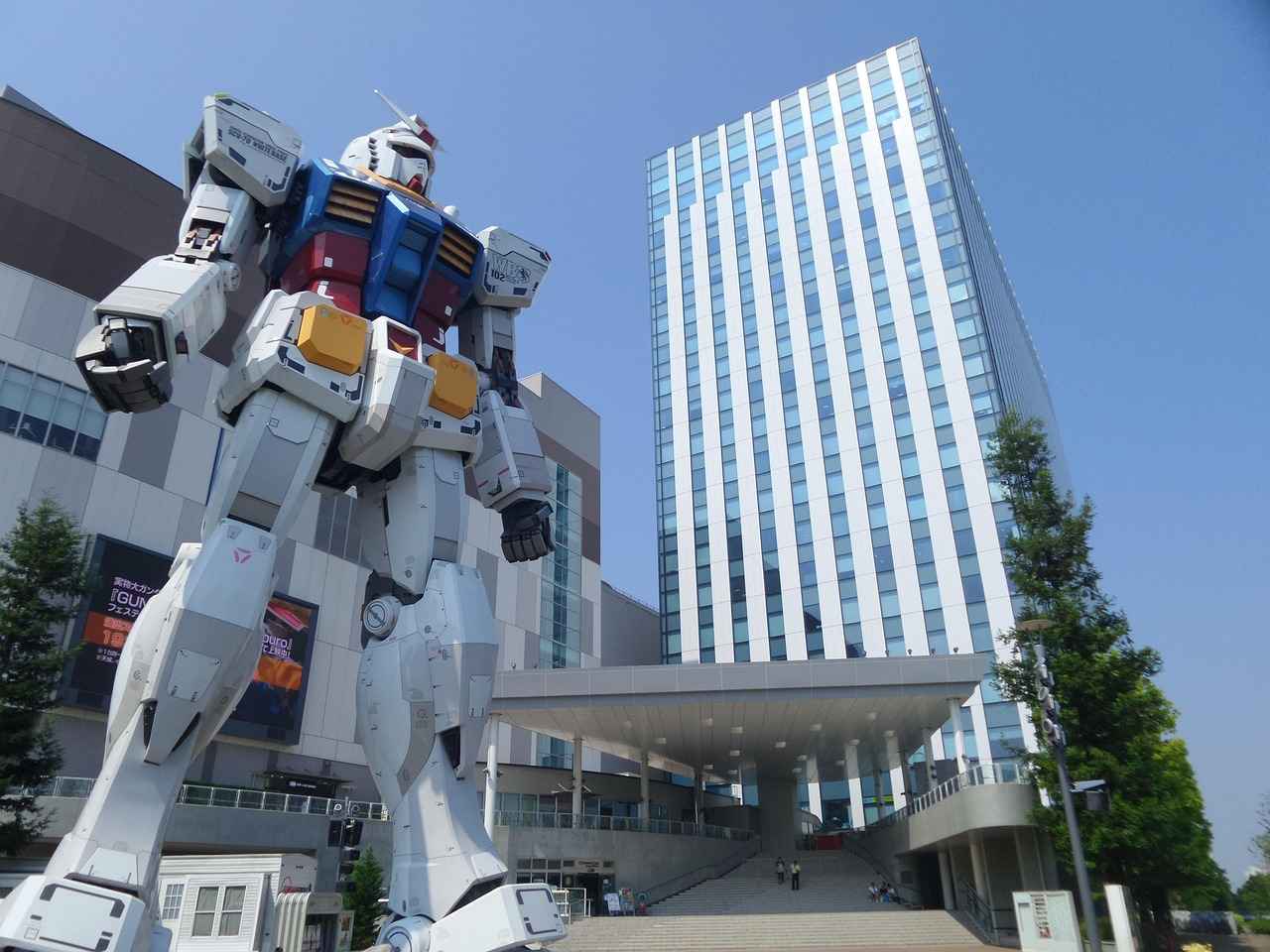This article explores the evolution of Ken Kaneki, detailing his transformation from a victim of circumstance to a formidable force within the Tokyo Ghoul universe.
Understanding Ken Kaneki’s Origin Story
Ken Kaneki’s journey begins with a traumatic encounter that introduces him to the harsh realities of ghoul culture. Raised in a normal environment, his life takes a drastic turn when he becomes entangled in the world of ghouls. This section delves into his early life, highlighting pivotal moments that shape his character and set the stage for his transformation.
The Impact of His First Encounter with Ghouls
Kaneki’s first encounter with ghouls is a defining moment that profoundly alters his life. This experience thrusts him into a realm filled with danger and despair, forcing him to confront his deepest fears. The significance of this encounter is crucial in shaping his identity, as it marks the beginning of his struggle for survival.
The Transformation into Half-Ghoul
After a near-fatal accident, Kaneki undergoes a transformation that changes him forever. This metamorphosis into a half-ghoul brings about significant physical and psychological effects. He grapples with newfound abilities and the accompanying challenges, which are essential to understanding his evolution.
Struggles with His New Identity
As a half-ghoul, Kaneki faces numerous challenges in reconciling his human and ghoul sides. His internal conflicts manifest in various ways, impacting his relationships with those around him. This struggle is a central theme in his journey, showcasing the complexity of his character.
Embracing His Ghoul Abilities
Over time, Kaneki learns to harness his ghoul powers, marking a significant turning point in his character development. This growth not only enhances his abilities but also establishes him as a powerful figure within Tokyo’s ghoul community.
Influence of Key Characters in His Journey
Throughout his journey, various characters play pivotal roles in Kaneki’s transformation. Their influence is instrumental in shaping his decisions and growth, providing essential support and challenges that contribute to his development.
Kaneki’s Evolution into a Leader
As the series progresses, Kaneki evolves from a reluctant participant to a decisive leader. The circumstances that lead to his rise in leadership are explored, showcasing his journey from victim to a figure of strength.
Forming Alliances and Building Trust
Kaneki’s journey involves forming alliances with both ghouls and humans. This section examines how trust is built and the importance of these alliances in solidifying his leadership role.
Challenges of Leadership
With leadership comes responsibility and challenges. Kaneki faces numerous obstacles as he navigates the complexities of leading a diverse group, highlighting the weight of his decisions.
Conclusion: The Legacy of Ken Kaneki
Ken Kaneki’s transformation from victim to powerful ghoul leaves a lasting legacy within the Tokyo Ghoul narrative. His journey not only impacts his character but also resonates with fans, reflecting themes of resilience, identity, and the search for belonging.

Understanding Ken Kaneki’s Origin Story
Ken Kaneki, the protagonist of the Tokyo Ghoul series, embarks on a tumultuous journey that begins with a traumatic encounter with the world of ghouls. This pivotal moment not only alters the course of his life but also sets the foundation for his complex character development. Born as a shy and bookish young man, Kaneki’s early life is marked by a deep fascination with literature and a desire for connection. However, his world is turned upside down when he meets Rize Kamishiro, a ghoul masquerading as a human.
This fateful meeting leads to a near-fatal accident where Kaneki is critically injured and subsequently transformed into a half-ghoul. This transformation is not just physical; it represents a profound shift in his identity. The trauma of his encounter with ghouls forces Kaneki to confront the harsh realities of a world where humans and ghouls are in constant conflict. As he grapples with his new existence, he experiences a myriad of emotions, including fear, confusion, and anger.
Throughout this section, we see how Kaneki’s relationships and interactions with other characters, such as his friends and mentors, play a crucial role in shaping his understanding of what it means to be both human and ghoul. His early struggles highlight the themes of identity, acceptance, and the quest for belonging, which resonate deeply with audiences.
Ultimately, Kaneki’s origin story is not just about his transformation into a half-ghoul; it is a reflection of his journey towards self-discovery and resilience. The challenges he faces in reconciling his dual identity lay the groundwork for his evolution into a powerful figure within the Tokyo Ghoul universe, making his story one of both tragedy and triumph.

The Impact of His First Encounter with Ghouls
Ken Kaneki’s life took a dramatic turn during his first encounter with ghouls, a moment that would irrevocably shape his identity and future. This encounter not only introduced him to a world filled with danger and despair, but also forced him to confront the harsh realities of existence beyond human perception.
Initially, Kaneki was an ordinary college student, blissfully unaware of the dark underbelly of society. However, his fateful meeting with a ghoul revealed the existence of beings that were both fascinating and terrifying. This pivotal moment marked the beginning of his transformation, as he was thrust into a struggle for survival that challenged his understanding of morality.
During this encounter, Kaneki experienced a profound sense of fear and confusion. The ghouls, often depicted as monstrous and inhumane, were not merely villains but victims of their own circumstances. This realization sparked a conflict within him, forcing Kaneki to question his own humanity and the societal norms he had previously accepted without doubt.
- Awakening to Reality: The encounter served as an awakening, pushing Kaneki to explore the complexities of life as both a human and a ghoul.
- Identity Crisis: Struggling with his new reality, Kaneki faced an identity crisis that would lead him down a path of self-discovery.
- Moral Ambiguity: The blurred lines between good and evil became increasingly apparent, challenging Kaneki’s beliefs and values.
As he navigated this new world, Kaneki’s initial fear transformed into a drive for understanding and acceptance. This transformation was not merely physical; it was deeply psychological, reshaping his perspective on life. The encounter with ghouls ultimately laid the groundwork for Kaneki’s evolution from a passive victim to a proactive participant in the ongoing struggle between humans and ghouls.
In conclusion, Kaneki’s first encounter with ghouls was a defining moment that catalyzed his transformation. It forced him to confront not only the external dangers of this new world but also the internal battles that would ultimately define his identity as he sought to reconcile his dual existence.
The Transformation into Half-Ghoul
After a near-fatal accident, Ken Kaneki’s life takes a dramatic turn, leading him into a world he never anticipated. This transformation into a half-ghoul is not just a physical change; it profoundly affects his psyche and identity.
Initially, Kaneki struggles with the reality of his new existence. The physical alterations, such as enhanced strength and the ability to regenerate, come with a heavy psychological toll. He grapples with feelings of alienation and confusion, as he is torn between his human past and his ghoul present. This internal conflict is a central theme in his journey, illustrating the struggle many face when confronting profound changes in their lives.
- Physical Changes: Kaneki’s body adapts to its new nature, granting him powers that he must learn to control. His senses become heightened, allowing him to perceive the world differently.
- Psycho-emotional Effects: The transformation leads to a deep sense of isolation. Kaneki often feels like an outsider, struggling to connect with both humans and ghouls.
- Identity Crisis: As he navigates his new reality, Kaneki faces an identity crisis. He must reconcile his memories and values as a human with his new instincts as a ghoul.
Throughout this journey, Kaneki encounters various characters who influence his understanding of what it means to be a ghoul. These interactions serve as crucial turning points, helping him to embrace his new identity rather than resist it. The psychological effects of his transformation are explored in depth, showcasing how trauma can lead to growth and resilience.
Ultimately, Kaneki’s evolution into a half-ghoul symbolizes the complexities of identity and the struggle for acceptance in a world that often rejects those who are different. His journey reflects a broader narrative about finding strength in vulnerability and the importance of community in overcoming personal challenges.
Struggles with His New Identity
As a half-ghoul, Ken Kaneki experiences a profound internal struggle that shapes his journey throughout the Tokyo Ghoul series. This conflict stems from his dual existence, where he is caught between the world of humans and that of ghouls. Each side presents unique challenges that Kaneki must navigate, leading to significant emotional turmoil.
- Identity Crisis: Kaneki grapples with the fear of losing his humanity while simultaneously embracing his ghoul side. This duality creates a constant battle within him, affecting his self-perception and his interactions with others.
- Relationships Tension: His transformation complicates his relationships with friends and family. The fear of harming those he loves, combined with the stigma attached to being a ghoul, creates distance and misunderstanding.
- Acceptance Issues: Kaneki struggles to accept his new identity, often oscillating between denial and acceptance. This struggle is depicted through his emotional breakdowns and moments of introspection, highlighting the psychological impact of his transformation.
Throughout the series, Kaneki’s internal conflicts manifest in various ways. For instance, he often questions his motivations and the morality of his actions, especially when faced with the harsh realities of ghoul society. This questioning leads to significant character development, as he learns to find a balance between his human emotions and ghoul instincts.
Moreover, Kaneki’s journey is marked by pivotal moments that force him to confront his identity. Encounters with other ghouls and humans challenge his preconceived notions of good and evil, pushing him to redefine what it means to be a half-ghoul. These experiences not only shape his character but also influence his relationships, as he learns to connect with others who share similar struggles.
In conclusion, Kaneki’s struggles with his new identity serve as a central theme in the Tokyo Ghoul narrative. His journey of self-discovery, marked by conflict and growth, resonates with many fans, making his character both relatable and compelling.
Embracing His Ghoul Abilities
As Ken Kaneki navigates the treacherous landscape of Tokyo’s ghoul society, he embarks on a remarkable journey of self-discovery and empowerment. Initially overwhelmed by his transformation into a half-ghoul, Kaneki gradually learns to embrace his new identity and harness the extraordinary abilities that come with it. This section delves into the stages of his growth, showcasing how he evolves from a frightened victim into a formidable force.
Initially, Kaneki struggles with the duality of his existence. The conflict between his human emotions and ghoul instincts creates a tumultuous inner battle. However, through intense training and the guidance of experienced ghouls, he begins to unlock the latent potential within him. His ability to regenerate, enhanced strength, and unique kagune become vital tools in his survival and quest for understanding.
One of the pivotal moments in Kaneki’s journey is his encounter with Yamori, also known as Jason, who becomes a catalyst for his transformation. Under Jason’s brutal mentorship, Kaneki is forced to confront his fears and push beyond his limits. This experience not only strengthens his physical capabilities but also solidifies his resolve to protect those he cares about.
As time progresses, Kaneki develops a profound understanding of his powers. He learns to control his kagune with precision, utilizing it in combat to defend himself and his allies. This newfound mastery allows him to face formidable opponents, transforming him into a respected figure among both ghouls and humans. His reputation as a powerful ghoul grows, marking him as a key player in the ongoing conflict between these two worlds.
Ultimately, Kaneki’s journey of embracing his ghoul abilities is not just about physical strength; it is also a testament to his emotional growth. He learns to accept the complexities of his identity, finding strength in his struggles and forging connections with others who share similar experiences. This evolution solidifies his status as a pivotal character in the Tokyo Ghoul narrative, illustrating the profound themes of acceptance and resilience.
Influence of Key Characters in His Journey
Throughout Ken Kaneki’s tumultuous journey in the Tokyo Ghoul series, he encounters a myriad of characters who significantly shape his evolution from a timid college student to a powerful half-ghoul. Each character not only influences Kaneki’s decisions but also plays a crucial role in his understanding of the world around him.
- Rize Kamishiro: Rize’s initial attack on Kaneki is the catalyst for his transformation. Her influence is profound, as her essence becomes a part of him, leading him to grapple with his identity as a half-ghoul. This encounter opens Kaneki’s eyes to the harsh realities of ghoul existence.
- Shu Tsukiyama: Known for his flamboyant personality and obsession with Kaneki, Tsukiyama challenges Kaneki to embrace his ghoul side. Their interactions force Kaneki to confront his fears and desires, ultimately helping him to accept his new identity.
- Touka Kirishima: As a fellow half-ghoul, Touka provides Kaneki with camaraderie and understanding. Her support and fierce nature inspire him to embrace his abilities, showcasing the importance of relationships in his development.
- Yamori (Jason): Yamori represents the darker aspects of Kaneki’s journey. His brutal torture of Kaneki serves as a pivotal moment, pushing Kaneki to awaken his inner strength and resilience. This experience is crucial in Kaneki’s transformation into a formidable force.
- Ken Kaneki (post-transformation): The evolution of Kaneki himself, after embracing his ghoul powers, marks a significant turning point. He becomes a leader, embodying the traits learned from his encounters, and influences others in turn.
These characters contribute not only to Kaneki’s transformation but also to the overarching themes of identity, struggle, and acceptance within the Tokyo Ghoul narrative. Their varying perspectives and interactions with Kaneki illustrate the complexity of his journey and the multifaceted nature of his character development.

Kaneki’s Evolution into a Leader
As the narrative of Tokyo Ghoul unfolds, Ken Kaneki’s transformation from a hesitant participant into a decisive leader becomes increasingly evident. This evolution is not merely a product of circumstance but rather a culmination of experiences that challenge and shape his character.
Initially, Kaneki grapples with his identity as a half-ghoul, struggling to reconcile his human emotions with his newfound powers. This inner turmoil is pivotal in his journey. The moment he realizes the necessity of leadership arises during a critical conflict where he witnesses the suffering of both ghouls and humans. This pivotal event ignites a sense of responsibility within him, compelling him to take charge.
To solidify his position as a leader, Kaneki understands the importance of forming alliances. He begins to collaborate with other ghouls, as well as sympathetic humans, creating a network of trust that is essential for survival in a hostile world. These alliances are not built overnight; they require patience, understanding, and the willingness to embrace vulnerability. Kaneki’s ability to connect with others, despite his own struggles, enhances his credibility as a leader.
However, leadership is fraught with challenges. Kaneki faces numerous obstacles, including betrayal, the weight of expectations, and the constant threat of violence. Each challenge tests his resolve and forces him to adapt. Through these experiences, he learns the significance of making tough decisions, often prioritizing the greater good over personal desires.
Ultimately, Kaneki’s journey illustrates that true leadership is not just about power; it is about compassion, strategic thinking, and the ability to inspire others. His evolution into a leader is a testament to the transformative power of adversity and the strength found in unity.
In conclusion, Kaneki’s rise to leadership is a complex narrative that reflects the broader themes of identity, responsibility, and the quest for understanding in a divided world. His journey resonates with audiences, showcasing the profound impact of personal growth and the importance of community in overcoming challenges.
Forming Alliances and Building Trust
In the complex world of Tokyo Ghoul, Ken Kaneki’s journey is not merely about survival; it is also about the intricate web of alliances he forms. These alliances, both with ghouls and humans, are crucial for his survival and evolution as a leader.
Initially, Kaneki’s interactions with ghouls are fraught with distrust and fear. However, as he navigates this treacherous landscape, he learns that building trust is essential. His early relationships with characters such as Touka Kirishima and Yamori serve as pivotal moments that teach him the value of camaraderie. Each of these characters brings unique perspectives and experiences, helping Kaneki understand the complexities of ghoul society.
Trust is not built overnight. Kaneki faces numerous challenges as he attempts to bridge the gap between humans and ghouls. His willingness to listen and empathize with others fosters an environment where mutual respect can flourish. For instance, his alliance with Hinami Fueguchi showcases how understanding can lead to powerful bonds, even in the face of adversity.
Moreover, Kaneki’s transformation from a solitary figure into a leader is marked by his ability to unite disparate groups. He realizes that by forming alliances, he can create a stronger front against common enemies, such as the CCG (Commission of Counter Ghoul). This strategic thinking highlights the importance of collaboration in achieving shared goals.
As Kaneki evolves, his leadership style becomes more inclusive. He learns that a leader is only as strong as the alliances they forge. By prioritizing trust and cooperation, Kaneki not only enhances his own strength but also empowers those around him, creating a formidable network of allies.
In conclusion, the journey of forming alliances and building trust is central to Kaneki’s development as a leader. His ability to connect with others, embrace differences, and foster unity is what ultimately sets him apart in the chaotic world of Tokyo Ghoul.
Challenges of Leadership
Leadership in any context is often accompanied by a myriad of responsibilities and challenges. For Ken Kaneki, the protagonist of the Tokyo Ghoul series, this truth resonates deeply as he transitions from a frightened victim to a powerful leader. As he navigates the complexities of leading a diverse group of ghouls and humans, Kaneki encounters several obstacles that test his resolve and character.
- Balancing Diverse Interests: One of the primary challenges Kaneki faces is the need to balance the interests of various factions within his group. Ghouls, who have their own unique perspectives and motivations, often clash with the human allies he seeks to protect. This requires Kaneki to act as a mediator, ensuring that all voices are heard while striving for a common goal.
- Building Trust: Trust is not easily earned, especially in a world rife with betrayal and suspicion. Kaneki must work diligently to establish credibility among his peers. His past as a victim often complicates this dynamic, as some may question his ability to lead effectively. Overcoming these doubts becomes crucial for his success as a leader.
- Personal Sacrifices: Leadership often demands personal sacrifices, and Kaneki is no stranger to this reality. As he takes on more responsibility, he finds himself distancing from friends and loved ones, which can lead to feelings of isolation. The emotional toll of leadership weighs heavily on him, challenging his mental fortitude.
- Confronting External Threats: In addition to internal struggles, Kaneki must also face external threats from both humans and rival ghouls. These confrontations not only test his leadership skills but also put his allies in jeopardy. Developing strategic responses to these threats while maintaining morale within his group is a delicate balancing act.
In conclusion, the challenges Kaneki faces as a leader are multifaceted and complex. His journey illustrates that leadership is not merely about wielding power but about navigating the intricate web of relationships, trust, and responsibility. As he confronts these challenges, Kaneki’s character continues to evolve, ultimately defining his legacy in the Tokyo Ghoul universe.

Conclusion: The Legacy of Ken Kaneki
Ken Kaneki’s journey throughout the Tokyo Ghoul narrative serves as a profound exploration of identity, trauma, and transformation. Starting as a mere victim of circumstance, Kaneki evolves into one of the most powerful ghouls in the series, leaving a significant mark on both the storyline and its audience. His metamorphosis is not just a personal evolution; it reflects broader themes of acceptance, struggle, and resilience.
Initially, Kaneki is portrayed as a timid and naive college student, blissfully unaware of the dark realities lurking within Tokyo’s streets. His life takes a dramatic turn following a near-fatal encounter with a ghoul, which forces him to confront the harsh truths of his new existence. This transformation into a half-ghoul is pivotal, as it ignites a series of internal conflicts that challenge his humanity and redefine his purpose.
As he grapples with his dual identity, Kaneki’s character deepens, showcasing a range of emotions from despair to determination. His struggle resonates with fans, making him a relatable figure for those who have faced their own battles. The intricate relationships he develops with other characters, including allies and adversaries, further enrich his narrative, illustrating the complexities of trust and friendship in a world divided by fear.
Ultimately, Kaneki’s evolution into a leader signifies his acceptance of both his human and ghoul sides. He learns to harness his powers, not just for personal gain but to protect those he cares about. This shift from victimhood to agency inspires many fans, reinforcing the idea that one’s past does not dictate their future.
In conclusion, Ken Kaneki’s legacy is one of transformation and empowerment. His story encourages viewers to embrace their identities and confront their fears, making a lasting impact on the Tokyo Ghoul series and its audience. As fans reflect on his journey, they find not just a tale of horror and survival, but also a message of hope and strength in the face of adversity.
